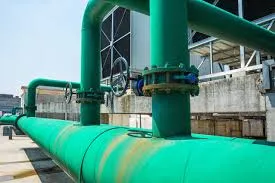
-
 Afrikaans
Afrikaans -
 Albanian
Albanian -
 Amharic
Amharic -
 Arabic
Arabic -
 Armenian
Armenian -
 Azerbaijani
Azerbaijani -
 Basque
Basque -
 Belarusian
Belarusian -
 Bengali
Bengali -
 Bosnian
Bosnian -
 Bulgarian
Bulgarian -
 Catalan
Catalan -
 Cebuano
Cebuano -
 China
China -
 China (Taiwan)
China (Taiwan) -
 Corsican
Corsican -
 Croatian
Croatian -
 Czech
Czech -
 Danish
Danish -
 Dutch
Dutch -
 English
English -
 Esperanto
Esperanto -
 Estonian
Estonian -
 Finnish
Finnish -
 French
French -
 Frisian
Frisian -
 Galician
Galician -
 Georgian
Georgian -
 German
German -
 Greek
Greek -
 Gujarati
Gujarati -
 Haitian Creole
Haitian Creole -
 hausa
hausa -
 hawaiian
hawaiian -
 Hebrew
Hebrew -
 Hindi
Hindi -
 Miao
Miao -
 Hungarian
Hungarian -
 Icelandic
Icelandic -
 igbo
igbo -
 Indonesian
Indonesian -
 irish
irish -
 Italian
Italian -
 Japanese
Japanese -
 Javanese
Javanese -
 Kannada
Kannada -
 kazakh
kazakh -
 Khmer
Khmer -
 Rwandese
Rwandese -
 Korean
Korean -
 Kurdish
Kurdish -
 Kyrgyz
Kyrgyz -
 Lao
Lao -
 Latin
Latin -
 Latvian
Latvian -
 Lithuanian
Lithuanian -
 Luxembourgish
Luxembourgish -
 Macedonian
Macedonian -
 Malgashi
Malgashi -
 Malay
Malay -
 Malayalam
Malayalam -
 Maltese
Maltese -
 Maori
Maori -
 Marathi
Marathi -
 Mongolian
Mongolian -
 Myanmar
Myanmar -
 Nepali
Nepali -
 Norwegian
Norwegian -
 Norwegian
Norwegian -
 Occitan
Occitan -
 Pashto
Pashto -
 Persian
Persian -
 Polish
Polish -
 Portuguese
Portuguese -
 Punjabi
Punjabi -
 Romanian
Romanian -
 Russian
Russian -
 Samoan
Samoan -
 Scottish Gaelic
Scottish Gaelic -
 Serbian
Serbian -
 Sesotho
Sesotho -
 Shona
Shona -
 Sindhi
Sindhi -
 Sinhala
Sinhala -
 Slovak
Slovak -
 Slovenian
Slovenian -
 Somali
Somali -
 Spanish
Spanish -
 Sundanese
Sundanese -
 Swahili
Swahili -
 Swedish
Swedish -
 Tagalog
Tagalog -
 Tajik
Tajik -
 Tamil
Tamil -
 Tatar
Tatar -
 Telugu
Telugu -
 Thai
Thai -
 Turkish
Turkish -
 Turkmen
Turkmen -
 Ukrainian
Ukrainian -
 Urdu
Urdu -
 Uighur
Uighur -
 Uzbek
Uzbek -
 Vietnamese
Vietnamese -
 Welsh
Welsh -
 Bantu
Bantu -
 Yiddish
Yiddish -
 Yoruba
Yoruba -
 Zulu
Zulu
The Role of FRP Launders in Enhancing Modern Water Treatment Processes
The Importance of FRP Launder in Modern Water Treatment
Water is an essential resource for life, and the treatment of this vital commodity is more critical than ever in our increasingly urbanized and industrialized world. As populations grow and demand for clean water rises, the processes used in water treatment must adapt to meet these challenges effectively. One of the key components in modern water treatment facilities that is gaining significant attention is the Fiberglass Reinforced Plastic (FRP) launder. This article explores the importance of FRP launders in contemporary water treatment practices.
What is FRP?
Fiberglass Reinforced Plastic (FRP) is a composite material made of glass fibers that are bonded with a resin. This combination provides strength and durability, making it an ideal material for various applications, including water treatment systems. FRP is known for being lightweight, resistant to corrosion, and having excellent structural integrity, which collectively make it highly suitable for water treatment processes.
Why Launders Matter
Launders are channels used to transport treated water from one stage of treatment to another. They are crucial in processes such as sedimentation, filtration, and disinfection. The efficiency and design of these launders can significantly influence the overall efficacy of the water treatment process. An effective launder system minimizes water stagnation, promotes even flow distribution, and reduces the risk of contamination.
The Benefits of Using FRP Launders
the importance of frp launder in modern water treatment

- Corrosion Resistance One of the most significant advantages of FRP launders is their resistance to corrosion. Traditional materials used in water treatment facilities, such as steel and concrete, can deteriorate over time due to exposure to water and various chemicals. FRP launders, on the other hand, can withstand harsh environments without succumbing to rust or decay, ensuring longevity and reducing maintenance costs.
- Lightweight and Easy to Install FRP components are substantially lighter than concrete or metal alternatives, which makes them easier to handle and install. This characteristic not only reduces labor costs but also speeds up the installation process, allowing water treatment plants to optimize their operations more quickly.
- Design Flexibility The versatility of FRP material enables engineers to design launders in various shapes and sizes to fit specific site requirements. Customizable features can be incorporated, such as integrated baffles and weirs, ensuring maximum efficiency in water flow and treatment.
- Low Maintenance FRP launders require relatively low maintenance. Their smooth surfaces prevent the accumulation of biofilm and sediments, thus reducing the need for frequent cleaning and upkeep. This benefit translates to lower operational costs and less downtime for water treatment facilities.
- Environmental Impact With increasing awareness of environmental sustainability, FRP launders are an environmentally friendly choice. Their durability leads to a longer lifespan compared to alternative materials, meaning fewer replacements and less waste. Additionally, their lightweight nature contributes to lower transportation emissions, which is significant in a world striving for sustainability.
Conclusion
In conclusion, the role of FRP launders in modern water treatment cannot be understated. Their resistance to corrosion, lightweight, ease of installation, design flexibility, low maintenance requirements, and environmental benefits make them an indispensable component in water treatment facilities. As the demand for clean water continues to increase, the need for innovative solutions like FRP launders will become even more critical. Investing in advanced materials and technologies is essential for efficient and sustainable water treatment practices, ensuring that communities have access to safe and clean water for generations to come. Embracing these modern solutions will not only enhance the effectiveness of water treatment processes but also contribute positively to the preservation of our most precious resource.









